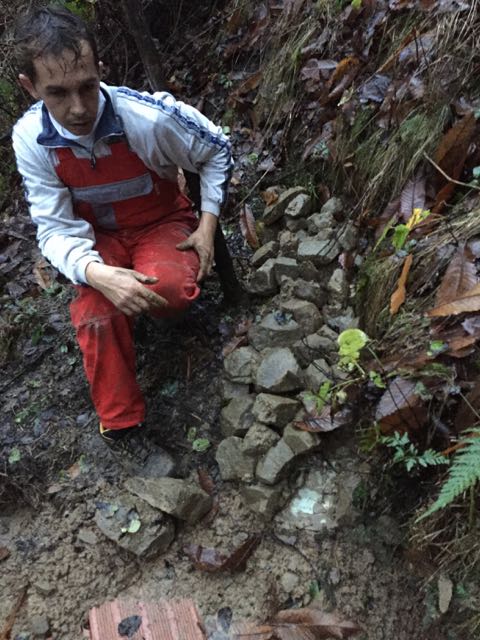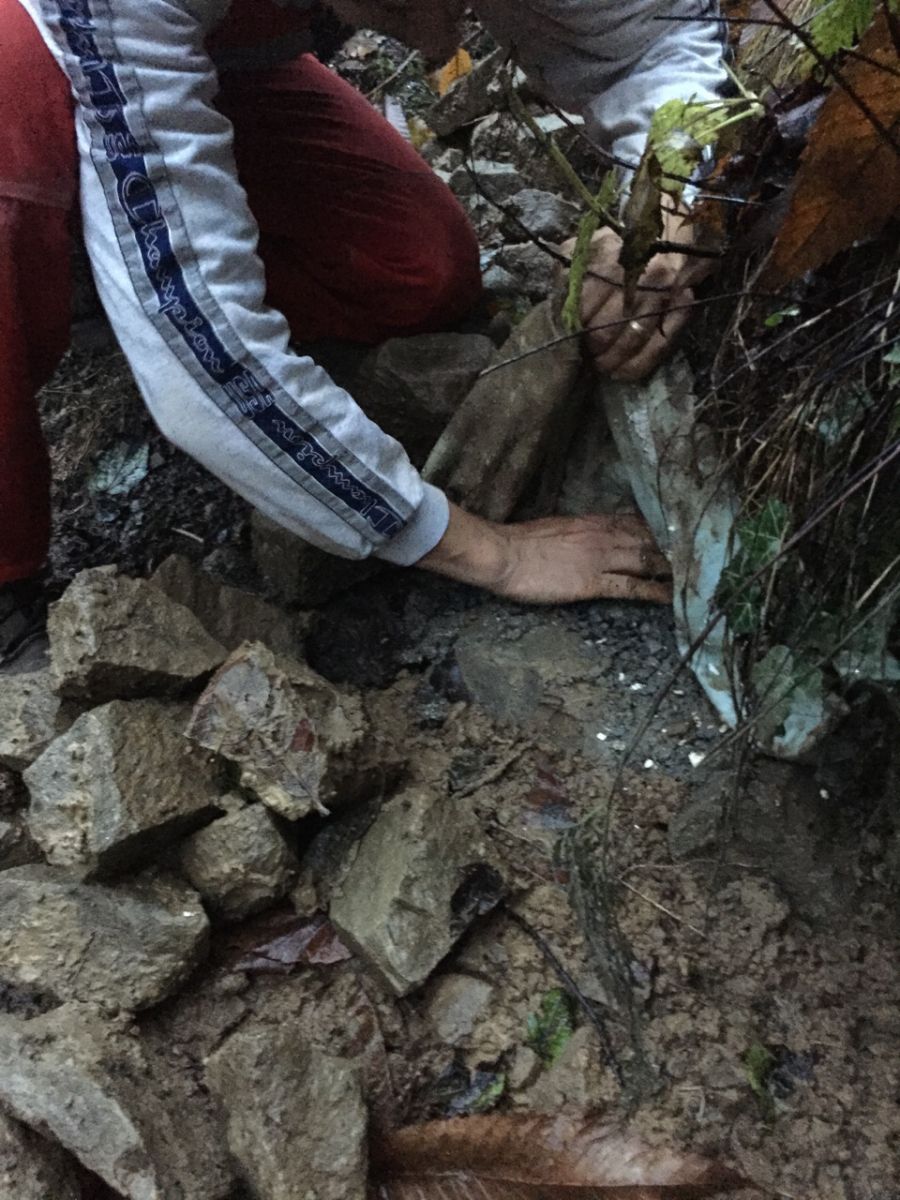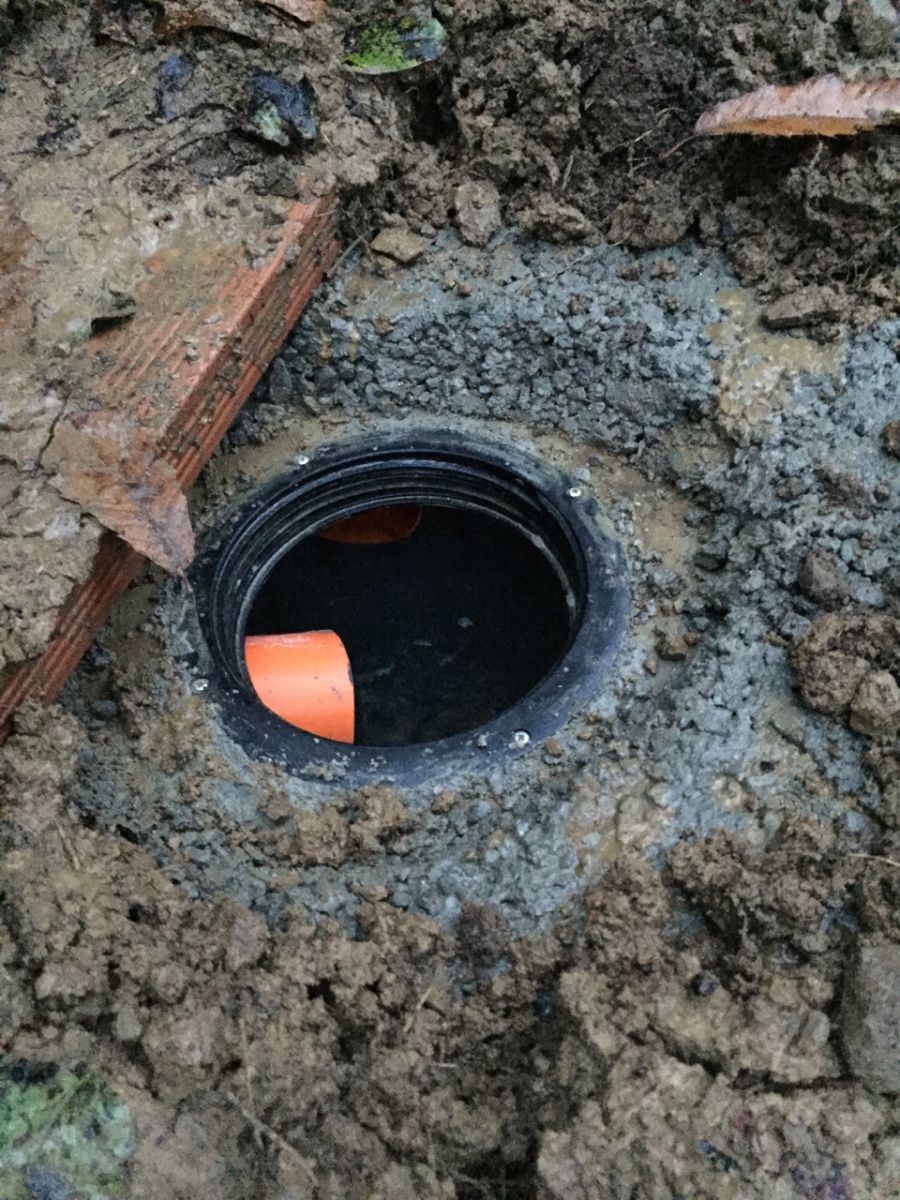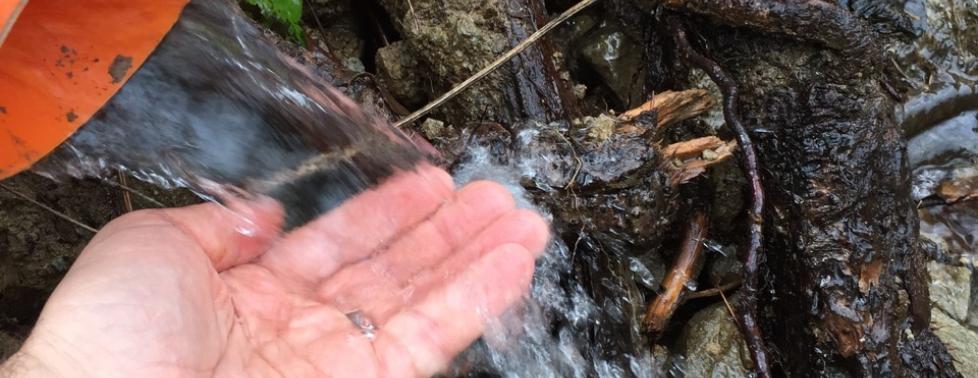
Our house is too remote to have access to city water. When we bought it, we learned vaguely that there was a spring nearby but didn't get nearly as much detail as we should have. Worst case, we figured we could always drill a well if necessary, while hoping that the existing system would work well enough. Unfortunately, once work started on the house and water became a requirement we learned that the existing system wasn't quite as reliable as we needed. With regular usage, water quickly stopped flowing.
After a little exploration and digging, we ultimately tracked down several springs including the one that had previously been used. The old water tank was made of asbestos, poorly installed, filled with sediment and the final resting place of a dead rodent.
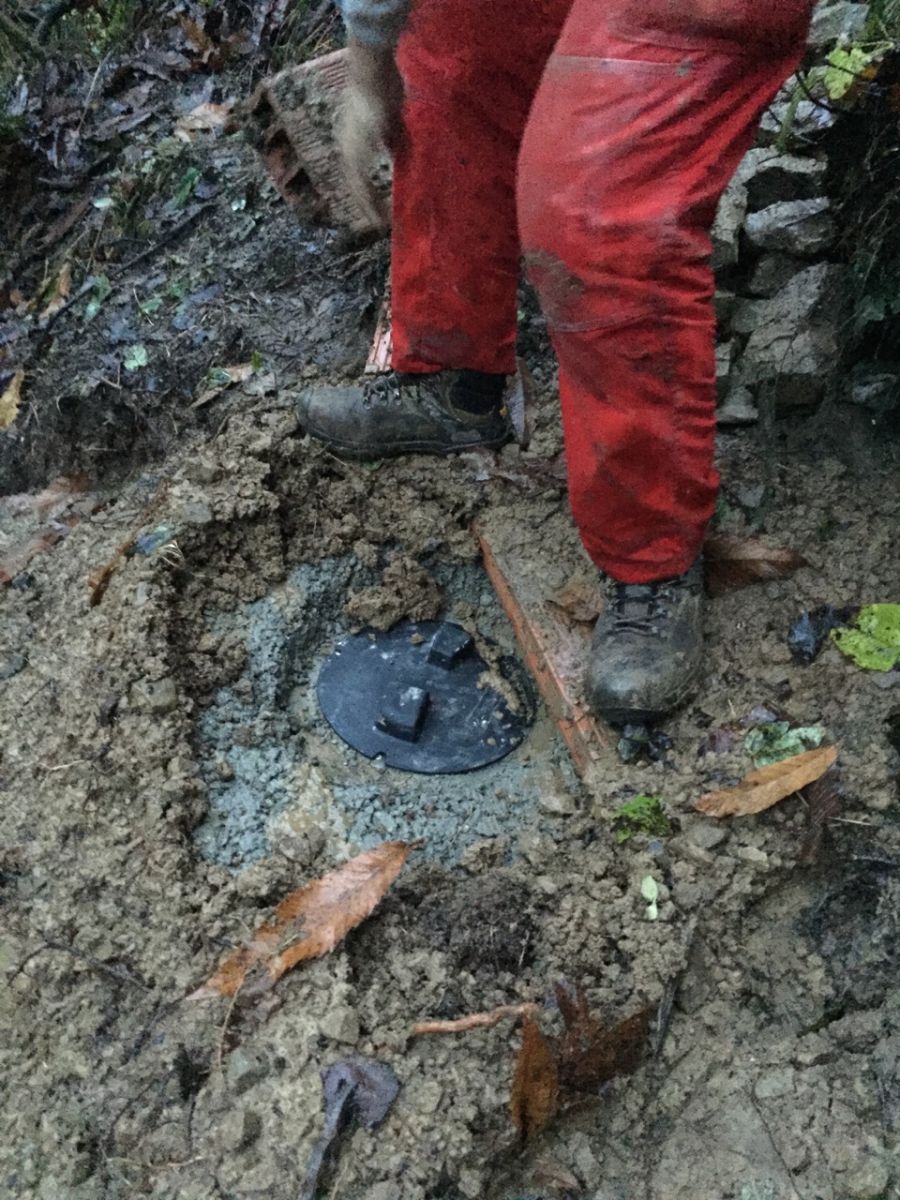 Finally, a pipe directs the water captured from the spring into a small plastic water tank below. The small tank has a screw-on cap and is covered in heavy terra cotta tiles, again to protect it from animals and the elements. This allows us to walk right over the top of it when we're inspecting our water source, while also giving us easy access to the tank if needed.
Finally, a pipe directs the water captured from the spring into a small plastic water tank below. The small tank has a screw-on cap and is covered in heavy terra cotta tiles, again to protect it from animals and the elements. This allows us to walk right over the top of it when we're inspecting our water source, while also giving us easy access to the tank if needed.
The orange pipe flowing from the spring is quite visible when you look inside the tank. Should any large sediment somehow get into the water, it will drop to the bottom of this tank, while clean water flows out through another pipe at the top to a second, larger tank below. The water never sits still to stagnate, constantly flowing and circulating through the tank. We'll inspect the tank annually to ensure it's not filling up with excessive amounts of sediment or anything else.
Below this first tank is a second which holds 300 liters (~80 gallons) of water. This is our actual water tank, from which we pipe water directly into our house. Our hope is that there's enough flow from our spring to keep this tank topped off throughout the year. As with the smaller tank above, water continually flows and circulates, preventing stagnation. Once full, excess water overflows out a pipe at the top of the tank and back into the small creek bed that's always existed below this spring.
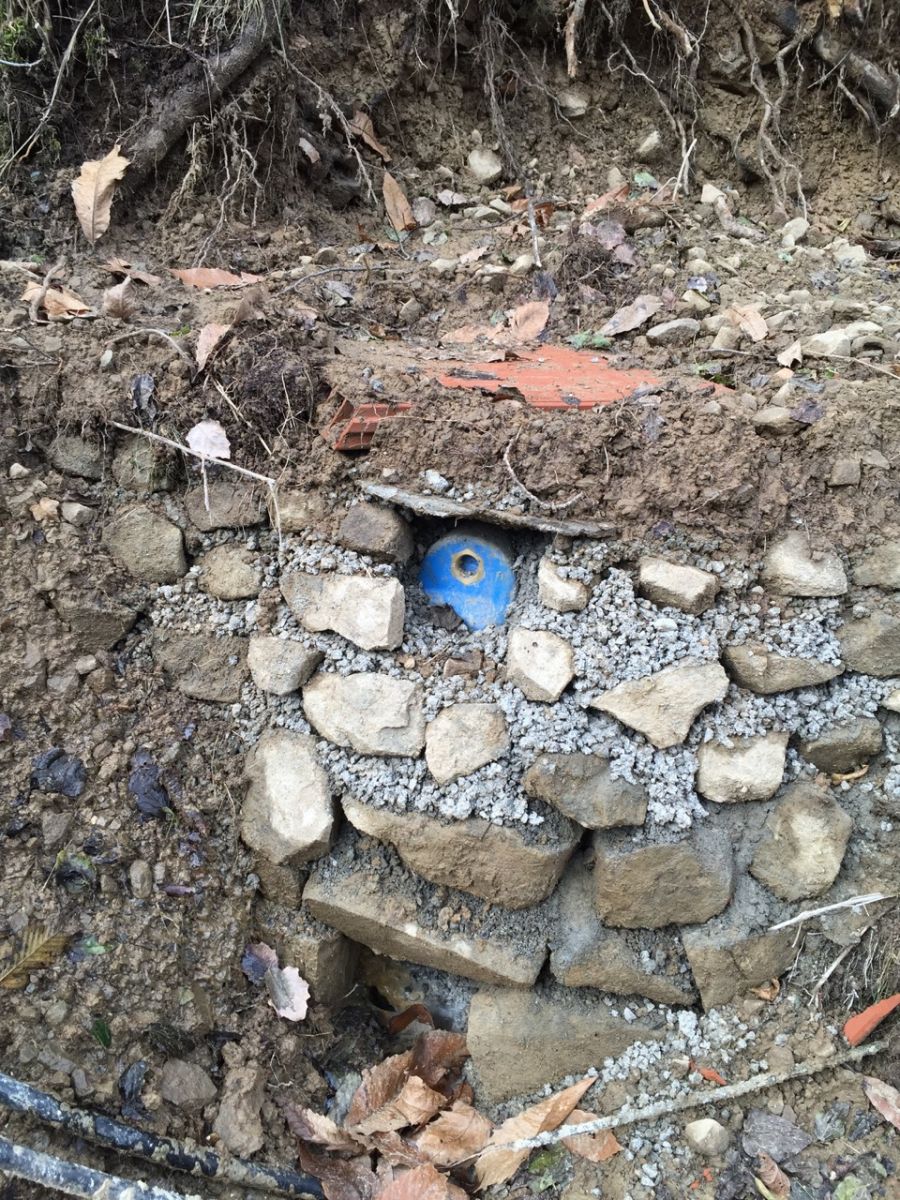 Seen from the side, our water tank is buried in dirt, with a simple rock wall on one side. A water pipe connects from the bottom of the tank and carries water to our house below. It's a simple gravity system with no need for pumps while still creating sufficient pressure to our house allowing us such luxuries as showering.
Seen from the side, our water tank is buried in dirt, with a simple rock wall on one side. A water pipe connects from the bottom of the tank and carries water to our house below. It's a simple gravity system with no need for pumps while still creating sufficient pressure to our house allowing us such luxuries as showering.
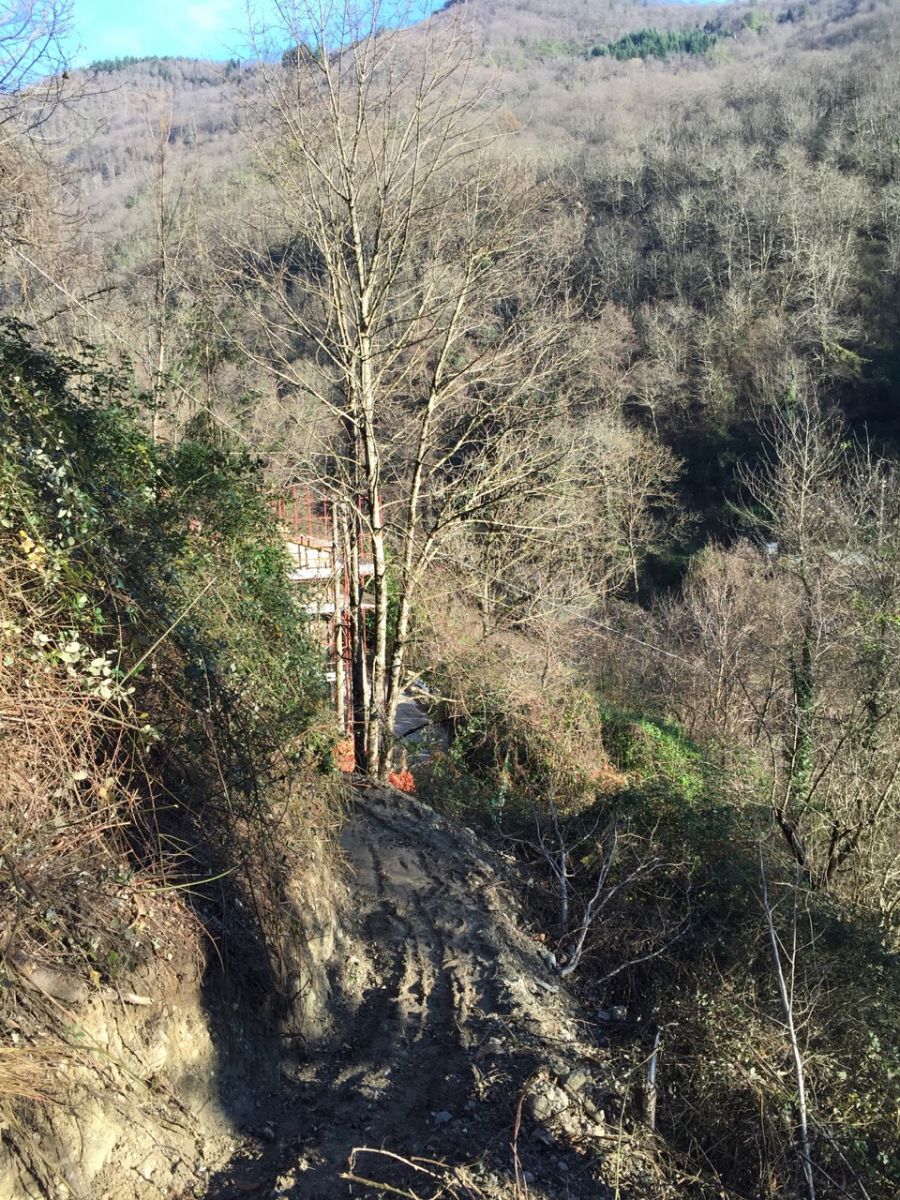
We're getting an estimated 1-2 gallons of water a minute flowing out of the spring this winter which is plenty to keep us in water. If the spring slows down during long dry spells, we will consider adding a larger tank.
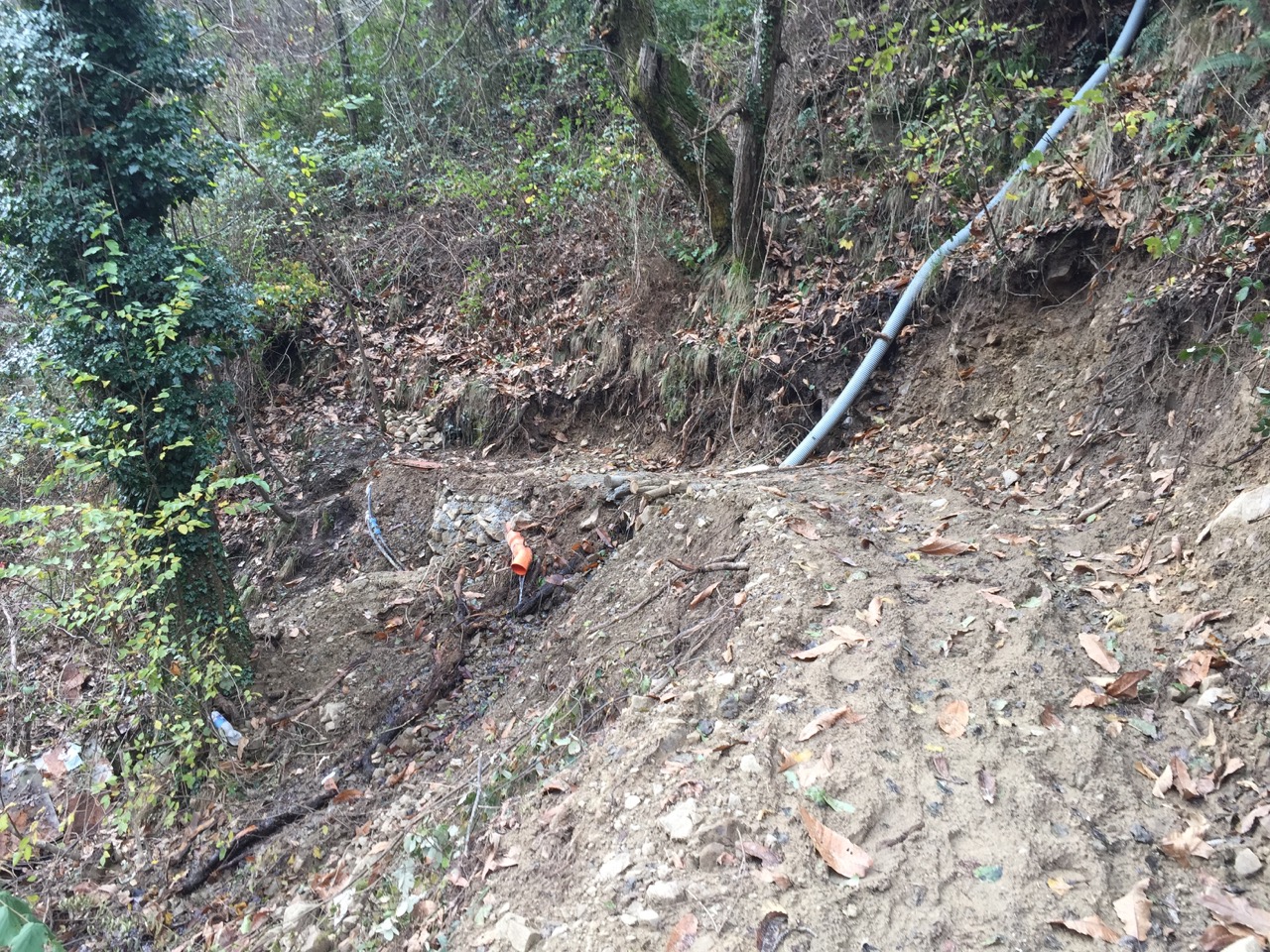 Just last week the work on this simple water system was completed, and it was hooked up to the house. While in most places these days we take running water for granted, we were absolutely thrilled to see water flowing into our sink and bathtub. Perhaps even more exciting was the ability to flush our toilet! Capping off our luxuries we even have hot water, thanks to a small electric hot water tank upstairs.
Just last week the work on this simple water system was completed, and it was hooked up to the house. While in most places these days we take running water for granted, we were absolutely thrilled to see water flowing into our sink and bathtub. Perhaps even more exciting was the ability to flush our toilet! Capping off our luxuries we even have hot water, thanks to a small electric hot water tank upstairs.
